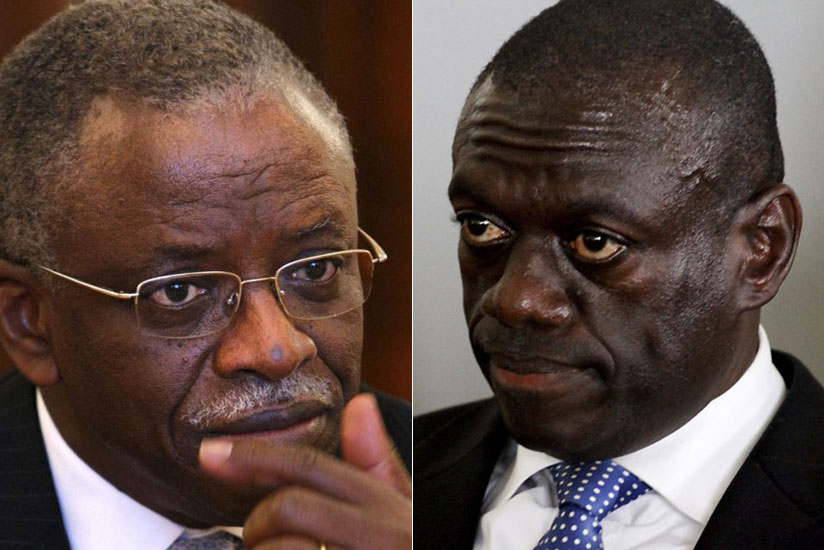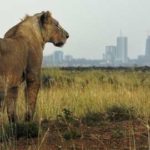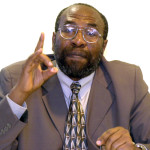After weeks of back and forth meetings and arguments, The Democratic Alliance has declared, amid voices of dissent, that it will field John Patrick Amama Mbabazi as its presidential candidate.
The post-Independence history of Uganda is awash tales of political debauchery and avarice, and it is not surprising that the ‘fine brains’ at the TDA summit and the contestants, principally Dr Kizza Besigye and former Prime Minister Amama Mbabazi failed to agree on a way forward in their quest to wrest the reins of power from the National Resistance Movement (NRM) and its leader Yoweri Kaguta Museveni.
In 1962, the country started off on a faulty premise, when Dr Apollo Milton Obote entered into an ‘unholy’ alliance with the Kabaka Yekka to outwit Democratic Party stalwart and Uganda’s first pre-Independence premier Benedict Kiwanuka. The Uganda Peoples Congress and KY alliance was a marriage of convenience that was set up to ‘eat’ into Kiwanuka’s support base in Buganda. Unfortunately, it did not last for long because Obote and Kabaka Edward Muteesa, then also President of Uganda, disagreed over a couple of issues including the ‘lost counties’ of Buyaga, Bugangaizi and Buhekura. Another thorny issue in this standoff was whether Mutesa, in his ‘private capacity’ as the Kabaka of Buganda could enjoy the services of the Uganda Army band at his birthday. Obote refused to honour Mutesa’s ‘demand’ and the rest as we know it, is history.
Then there was the anti-Idi Amin coalition formed in the early 70s, comprised mostly of Ugandan intellectuals who had fled the murderous regime. They formed several loose alliances like the Front for National Salvation (Fronasa) of Yoweri Museveni and the likes of Mbabazi; the Save Uganda Movement (SUM) of Paulo Muwanga, Samwiri Mugwisa and Ateker Ejalu, among other groups, which later on coalesced under an ‘umbrella’ called the Uganda National Liberation Front (UNLF). This UNLF organised the Moshi Conference, a loose alliance of 28 groups which, with the support of the Tanzania Peoples Defence Forces (TPDF), spearheaded the ouster of Amin and the subsequent capture of power in April 1979. However, because the respective political players had different interests, the UNLF was never to hold and within the first two months its leader Professor Yusuf Lule was shown the exit. The cracks were now bare and evident; some UNLF members wanted former UPC boss Obote back as the President of Uganda, as if by divine right! But before they could execute their plan, these UNLF members, most belonging to the then defunct Uganda Peoples Congress (UPC), were forced to swallow humble pie, paving the way for Godfrey Lukongwa Binaisa, a former Attorney General during the Obote I regime, to become president. A ‘comedian’ Binaisa faced turbulent times amidst intense infighting in government and nine months into office he tried to purge those he thought were responsible for punching holes in the ‘umbrella’ and making it leak. In this journey to political homicide Binaisa started off with shuffling the ‘wrong persons’: Defence Minister Yoweri Museveni, Labour Minister Paulo Muwanga and Army Chief of Staff Brigadier David Oyite Ojok. He would later regret this move: On May 11 1980, Binaisa was deposed and held under house arrest and a ‘sober’ group of Ugandans, two Judges and one politician: Justice Saulo Musoke, Justice Polycarp Nyamuconco and Yoweri Hunter Wacha Olwol were appointed to serve as de facto leaders under what was then known as the Presidential Commission. This Commission succeeded the Military Commission which was headed by Muwanga, and deputized by Museveni with Oyite Ojok and then Major General Tito Okello Lutwa as members. And about one year later, the four leading proponents of the Military Commission had disagreed, with Yoweri Museveni going to the ‘bush’ in February 1981, after contesting the December 10, 1980 elections, which he said had been rigged to hand power to Milton Obote.
The remaining three namely Muwanga, Brig Oyite Ojok and then Maj Gen Tito Okello were to maintain a presence in Obote’s UPC government, serving as Vice President and Defence Minister, Army Chief of Staff and Army Commander, respectively. But by 1982, following incessant attacks by several guerilla outfits including Museveni’s Peoples Resistance Army (PRA), the Uganda Freedom Movement (UFM) of Andrew Lutakome Kayira and the Freedom Democratic Movement (Fedemu) of Doctor David Livingstone Lwanga and Captain George Nkwanga, tribal cracks began to emerge in the Uganda National Liberation Army (UNLA) between the Langi and Acholi over the ‘war strategy’, mostly in respect of command and the deployment of foot soldiers. The ensuing chaos persisted for about another year, with the lowest points coming after December 2 1983, when then Major General Oyite Ojok died in a helicopter crash in Kasozi in Luwero.
Indeed, Maj Gen Oyite Ojok’s death caused a strain in Uganda’s military command, and President Obote failed to name his successor for over a year. And when he did, Obote named his tribesmate, little-known Langi officer Lieutenant Colonel Smith Opon Achak as Chief of Staff and promoted him to Brigadier, in the process whizzing past the likes of Acholi commanders, Colonels Langoya and Mwaka, and Bazilio Olara Okello, then Commander of Central Brigade.
The Opon Achak jolt in 1984 made the Acholi rethink their status within the army ranks, and by early 1985 it was evident that there was a split when then Vice President and Minister of Defence announced that there had been an ‘uncoordinated movement of troops’ after renegade Acholi foot soldiers attacked Mbuya barracks.
Then, on July 27, 1985 the Acholi struck, bundled out Obote and formed the Military Council headed by Gen Tito Okello Lutwa and deputized by then Brigadier Bazilio Olara Okello. These two also tried to form an alliance with various military groups that were opposed to the Obote II regime but none would prove conclusive after only men and officers of the Uganda National Rescue Front led by the flywhisk-carrying Major Amin Onzi, came ‘out of the bush’. Other groups that ‘consented’ to the Okello junta olive branch after a series of ‘peace talks’ included UFM and Fedemu, which however, stationed their forces in Kampala’s peripheral areas like Kansanga, Kabalagala and Makindye. Museveni and the NRA had named then Commander Salim Saleh (Caleb Akandwanaho) to the Council but he never set foot in Kampala, mostly after word went round that the Okellos were inviting their adversaries and killing them, a case in point being that of George Nkwanga, the Fedemu military leader who was reportedly slain by Gen Bazilio Olara Okello.
Save for the increased insecurity the Okellos did not make any impact on Uganda’s political stage, largely because they spent only six months in power, the second shortest regime period in Uganda’s history so far, the first having been Lule’s two months as president, from April to June 1979.
Then, on January 26, the NRM/A captured state power and set out to form ‘alliances’ with the various groups, most of which had been in opposition to the Obote and Okello regimes.
Subsequently, under a ‘broad-based government’ the NRM/A brought on board people like DP’s Paul Kawanga Ssemwogerere, UFM’s Dr Andrew Lutakome Kayira, Fedemu’s Dr David Livingstone Lwanga, and General Moses Ali of the UNRF. This alliance held for sometime, ending around 1995 with Semwogerere’s departure, amid clamours for the reinstatement of multipartism.
Then, at the tail end of agitation for return to multiparty politics in 2005, the Democratic Party (DP) and the Uganda Peoples Congress (UPC) formed the Inter- party Forces for Cooperation (IPFC), and fronted DP’s Dr Paul Kawanga Ssemwogerere to contest against Museveni and the NRM. The group then known as the G6 lost the 2006 elections and collapsed.
Earlier in 2004, a new political party, the Forum for Democratic Change (FDC) had been formed, mainly by neo-oppositionists who had broken away from the NRM and now bent at removing the regime from power.
However, with the NRM proving unbeatable, another almost similar alliance, the Inter Party Cooperation (IPC) was to surface in 2008, with the opposition parties like DP, UPC, the Justice and Equality Movement (JEEMA) and the Conservative Party (CP) joining the Forum for Democratic Change (FDC).
The IPC also collapsed in similar fashion, after a series of disagreements which saw the DP and UPC withdraw, leaving only the FDC, CP, Jeema, new entrant, the Social Democratic Party (SDP) of Michael Mabikke and the political pressure group Ssuubi led by former Buganda katikiro Joseph Mulwanyamuli Ssemwogerere and political activist Erias Lukwago among others. This group, though largely comprised of ‘weak’ parties and pressure groups, sympathised with Dr Kizza Besigye and the FDC in the 2011 elections. Dr Besigye lost but was shortly to ally with DP’s Mathias Mpuuga to start what they termed For God and Country (4GC) and organised the ‘Walk to Work’, a political-cum-economic protest against the soaring commodity prices obtaining then.
However, after months of protest the ‘alliances’ seemed to go into abeyance, only to resurface early this year. This was after the resumption of intense political activity following the Kyankwanzi Resolution, a development that paved the way for President Yoweri Museveni to be proposed as ‘sole candidate’ by the NRM in February 2014.
The Evelyn Anite-led motion seemed to scuttle the NRM, with then Secretary General John Patrick Amama Mbabazi’s hesitantly signing the Resolution as Number 202. Mbabazi’s political ambitions including becoming President of Uganda had also seemingly been thrown into doldrums; what followed was his sacking as Prime Minister in September 2014, followed by his demotion from the post of SG in December the same year.
Mbabazi, the Member of Parliament for Kinkiizi West then went into temporary political oblivion, leaving his wife Jacqueline, daughter Nina Mbabazi Rukikaire and sister-in-law Hope Mwesigye Ruhindi, a former agriculture minister and local government state minister, to take charge of his political destiny.
However, on June 16, Ugandans woke up to a ‘Youtube’ message by Mr Mbabazi, indicating he would contest for both the chairmanship of the NRM and the Ugandan presidency. He failed in his endeavor to position himself in the NRM and it was at this juncture that the supremacy battle betweem Museveni and Mbabazi took a different twist, prompting politicians from different shades to wait for Mbabazi’s next communication regarding his new political journey.
Inevitably, Uganda’s longest-standing political alliance spanning over 40 years had collapsed, and Mbabazi started his ‘lone’ political maneuvers, first by reaching out to all who stood for ‘change’. The Democratic Alliance (TDA) was an almost natural option, since it brought together several politicians allied to different political organisations. And before we knew it, Mbabazi emerged one of the four top contenders for the presidency, contesting against FDC’s Kizza Besigye, DP’s Norbert Mao and Professor Gilbert Bukenya. The latter two dropped off, leaving Mbabazi and Besigye to tussle it out for the TDA flag bearer, a contest that ended with both men ‘agreeing to disagree’.
So, just like all alliances before it, the TDA had also collapsed; a failure arising out of individual perceptions and the egotistic tendencies of its contenders for the top slot.
And as we all know now, Dr Besigye has returned his nomination forms to the Electoral Commission, a stark indicator that he is going to stand on the FDC ticket.
I will not speculate about Mbabazi’s next move but chances are he will be on the ballot paper alongside his two former NRM colleagues, Museveni and Besigye, come 2016.







